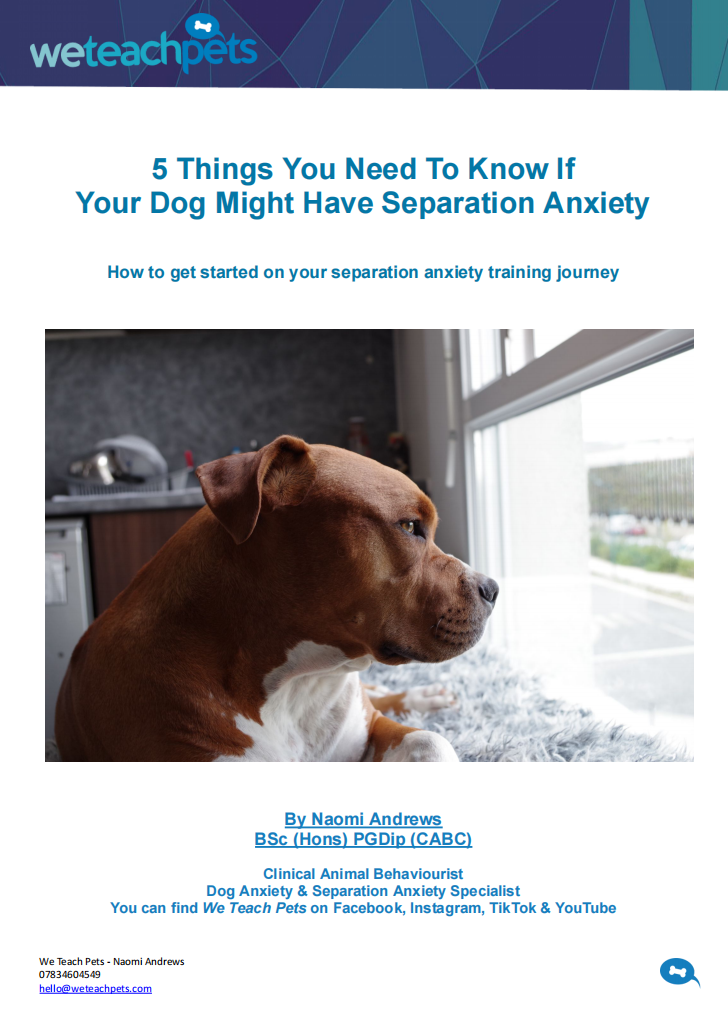Does your dog have symptoms of Separation Anxiety?
Have you read about the high number of dogs who have separation anxiety? Many whose owners are completely unaware? Perhaps your wondering what the symptoms of separation anxiety are so you can check?
Or maybe you’ve had a complaint from your neighbour about your dog barking or howling, or you’ve come back to accidents or destruction.
You’re wondering whether your dog might have separation anxiety.
So, what are the symptoms of Separation Anxiety
Look for signs of anxiety throughout the absence. Most separation anxiety symptoms will develop within the first 20-30 minutes, but other anxieties may be triggered at any time.
What to do if your dog shows symptoms
If it looks like your dog might have separation anxiety then the main things to remember are that this is not your fault, and that there are things you can do to help your dog and train them to cope better. You are certainly not alone. Separation Anxiety is common. But this doesn’t mean we shouldn’t do something about it; quite the opposite.
The earlier you make a start on their training the better. The longer the issue goes on, the stronger the association between being alone and anxiety becomes.
- Find ways of avoiding leaving your dog home alone for now. Speak to friends and neighbours or doggy day care or boarding to create a network of options for care for your dog.
- Increase your dog’s enrichment and use this to help build independence.
- Start targeted separation anxiety training DIY or with the support of a suitably qualified professional (did you know your pet insurance may reimburse the fees?).
Search the blog page for “Separation Anxiety” to learn more about separation anxiety and how to treat it. Or check out the separation anxiety page of the website here to find out more about my specialised separation anxiety training packages.
More separation anxiety content
Free Separation Anxiety Help Here!




 The first step is to video your dog when they are home alone so you can actually see what they are doing. Set up a zoom meeting with one device on your dog with you sitting down the road, for example. Or set up a pet cam if you have one.
The first step is to video your dog when they are home alone so you can actually see what they are doing. Set up a zoom meeting with one device on your dog with you sitting down the road, for example. Or set up a pet cam if you have one.